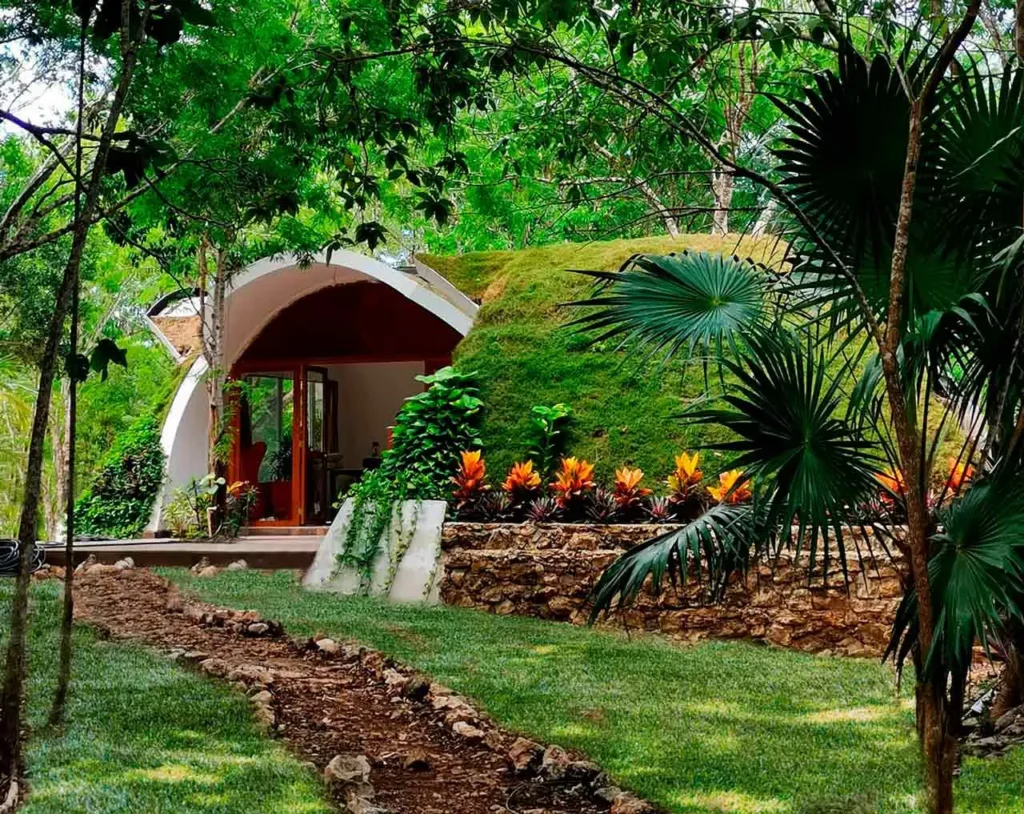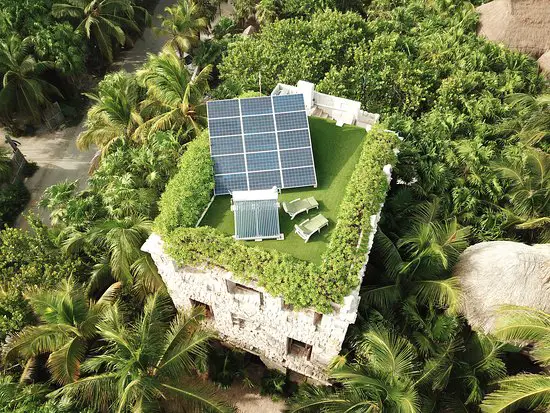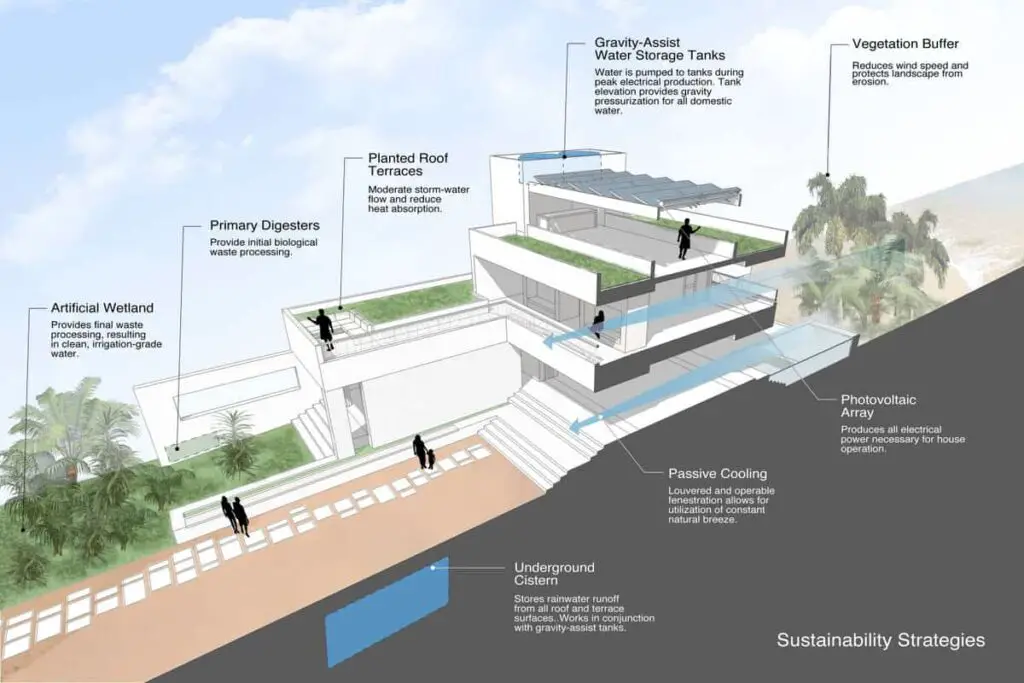How to Conserve Energy in the Riviera Maya: Smart Tips for Sustainable Living
Table of Contents
- 1 How to Conserve Energy in the Riviera Maya: Smart Tips for Sustainable Living
- 2 How to Lower Your CFE Bill in Mexico
- 3 Solar Panels in the Riviera Maya: Are They Worth It?
- 4 Energy-Efficient Homes in Tropical Climates
- 5 Renewable Energy and Sustainable Building in Quintana Roo
- 6 Off-Grid Living in the Riviera Maya
- 7 Final Thoughts
Living in the Riviera Maya offers sun-drenched beaches, lush jungle, and a laid-back lifestyle. But it also comes with unique challenges when it comes to energy use. High humidity, year-round heat, and the cost of electricity from Mexico’s Comisión Federal de Electricidad (CFE) can make monthly bills surprisingly steep. Whether you’re a full-time resident or a seasonal visitor, making your home more energy efficient can help lower expenses, improve comfort, and reduce your environmental impact.

How to Lower Your CFE Bill in Mexico
Why Electricity Costs Are So High in Quintana Roo
CFE rates vary by region in Mexico. Homes in Quintana Roo can slip into the DAC tariff (De Alto Consumo) more easily than other states due to year-round cooling needs. Once you exceed a consumption threshold, you lose access to subsidies and pay the highest residential rate in the country.
Combined with heavy reliance on fossil fuels for national energy generation, this makes the Riviera Maya one of the most expensive places in Mexico for electricity.
Smart Habits That Make a Big Difference
Even without major investments, small lifestyle changes can shave a significant amount off your CFE bill:
- Set air conditioning sensibly: Keep it between 25–26 °C (77–79 °F) for comfort without overworking the system. Run it only in rooms you’re actually using, and seal doors and windows to prevent leaks.
- Use ceiling fans: Fans consume about 90% less electricity than A/C units. Combine them with natural ventilation in the mornings and evenings when outdoor air is cooler.
- Unplug and switch off: Electronics and appliances draw “phantom power” even when off. Use smart plugs or power strips to cut this waste automatically.
- Shift high-energy tasks: Run washing machines, dryers, or dishwashers during cooler hours of the day or at night when demand on the grid is lower.
- Put a timer on hot water heaters: Traditional boilers run constantly, even when not in use. A simple timer or smart switch ensures they only heat when you need them—such as an hour before morning showers.
- Shorten showers and use efficient showerheads: Reducing shower time by just a few minutes can save both electricity and water, especially if you’re heating with an electric or on-demand heater.
- Take advantage of natural light: Open curtains and blinds during the day to reduce the need for interior lighting. In well-designed tropical homes, daylight can cover most of your lighting needs.
- Laundry habits matter: Wash clothes in cold water whenever possible. It’s effective with modern detergents and eliminates the need for the energy-hungry heating cycle. Air-dry clothes outdoors, which also helps reduce indoor humidity.
- Check fridge and freezer settings: Keeping your refrigerator between 3–5 °C (37–41 °F) and freezer at –18 °C (0 °F) is cold enough for food safety without wasting excess energy.
Individually these changes may seem minor, but together they can significantly reduce your household’s electricity consumption and help you avoid tipping into CFE’s high-cost DAC tariff.

Solar Panels in the Riviera Maya: Are They Worth It?
Average Solar Panel Cost in This Region
Thanks to abundant sunshine, solar panels are one of the best long-term investments for homeowners in the region. As of 2025, the average cost to purchase and install a solar system is as follows:
- Small residential systems (4–6 panels): USD 3,000–5,000
- Mid-sized systems (8–12 panels): USD 6,000–10,000
- Larger off-grid setups with batteries: USD 12,000+
Return on investment typically comes within 3–5 years, depending on consumption and whether batteries are included. Many expats and locals report cutting their bills by 70–90% after installation.
How the CFE Bidirectional Meter Works
To benefit from solar panels, you’ll need a CFE bidirectional meter. This system measures both the energy you draw from the grid and the excess energy your panels send back. Surplus production becomes credit on your bill, rolling over month to month.
While credits can’t be “cashed out,” they help offset future consumption making this a simple, cost-effective way to slash energy expenses while staying connected to the grid.

Energy-Efficient Homes in Tropical Climates
Natural Cooling and Eco-friendly Ventilation
Riviera Maya homes can take advantage of the region’s natural elements to stay comfortable without relying solely on air conditioning. By thinking about airflow, shading, and orientation, you can cut cooling costs while making your home healthier and more sustainable.
- Cross ventilation: Positioning windows and doors so they line up with prevailing breezes is one of the most effective cooling strategies in the tropics. Louvered windows or sliding doors that can stay partially open allow air to circulate freely. Ceiling fans placed near these openings help draw cooler evening air through the home.
- Shade structures: Pergolas, palapas, awnings, and exterior shade screens block direct sun from heating walls and windows. Even lightweight bamboo blinds or woven palm shades can make a big difference in reducing heat gain on terraces and patios, creating outdoor “buffer zones” before the sun reaches indoor spaces.
- Landscaping for shade: Trees and vines do double duty, cooling the immediate surroundings and adding beauty. Planting native species like chicozapote, palm, or flamboyán near west-facing walls creates a natural barrier against the harsh afternoon sun. Vertical gardens or trellised vines can also shield exposed walls from radiant heat.
- Roof and wall design: Traditional Mayan palapa roofs were designed for a reason. They allow hot air to rise and escape quickly. Modern adaptations like high ceilings, clerestory windows, and roof vents replicate this principle, reducing trapped heat.
- Reflective surfaces and colors: Painting roofs and exterior walls in lighter shades or applying reflective coatings minimizes solar absorption. White and pastel tones can keep a building several degrees cooler compared to darker colors.
- Humidity management: Ventilating bathrooms and kitchens with extractor fans helps remove warm, moist air before it spreads, improving indoor comfort without heavy A/C use.
When thoughtfully combined, these strategies create a home that feels cooler naturally, uses less energy, and harmonizes with the Riviera Maya’s tropical environment.
The Best Appliances for Energy Savings in Mexico
Appliance choices matter more than many homeowners realize. In a region where high electricity consumption can quickly push you into CFE’s DAC (high-consumption) tariff, choosing efficient models isn’t just eco-friendly, it’s essential for keeping bills manageable.
- Inverter Air Conditioners
Traditional A/C units cycle on and off, drawing large surges of electricity each time they restart. Inverter models adjust their output gradually to maintain a steady temperature, using up to 40% less energy. They also cool more quietly and consistently, making them ideal for hot, humid nights in the Riviera Maya. - Energy-Efficient Refrigerators
Refrigerators are one of the few appliances that run 24/7, so efficiency is critical. Look for ENERGY STAR-rated or equivalent models available in Mexico. Keep the fridge moderately full, enough to retain cold air but not so packed that circulation is blocked. Positioning it away from direct sunlight and ensuring good ventilation behind the unit further reduces wasted energy. - Induction Cooktops
In hot climates, the kitchen can quickly become a heat trap. Induction cooktops use electromagnetic fields to heat pots directly, rather than heating the surrounding air, which saves electricity and keeps your kitchen cooler. They’re faster, safer, and more precise than gas or electric coil stoves, especially beneficial during long, humid summers. - Washer/Dryer Efficiency
While many homes in Mexico line-dry clothes, expats often rely on electric dryers. If you must use one, choose a heat-pump dryer or switch to air-drying whenever possible. For washing, front-load machines use significantly less water and energy compared to top-loaders. - Other Appliances to Consider
- Microwave ovens for reheating instead of energy-hungry conventional ovens.
- On-demand (tankless) water heaters that heat only when needed, avoiding standby energy losses.
- LED lighting throughout the home, consuming up to 85% less power than incandescent bulbs and lasting years longer.
How to Reduce Phantom Energy with Smart Plugs
Even when “off,” many electronics keep drawing power. This phantom load (also called vampire power) can account for 5–10% of your monthly bill. In a high-tariff region like Quintana Roo, that waste adds up fast.
Smart plugs, timers, and power strips make it easy to control this hidden drain:
- Automatically cut power: Set smart plugs to shut off devices completely when not in use, ideal for TVs, routers, or coffee machines.
- Schedule heavy appliances: Program washing machines, pool pumps, or water heaters to run during cooler nighttime hours, when the grid is under less stress.
- Monitor consumption: Some smart plugs track usage in real time, showing exactly which devices are driving up your bill. Many expats are surprised to learn how much power things like water pumps or entertainment systems consume.
- Remote control: With Wi-Fi enabled plugs, you can turn appliances on or off from your phone, even while traveling.
For larger households or vacation rentals, smart plugs also provide peace of mind, ensuring energy isn’t wasted when rooms are unoccupied.

Renewable Energy and Sustainable Building in Quintana Roo
Eco-friendly Building Materials in Mexico
Construction practices in the Riviera Maya are shifting as homeowners and developers look for ways to balance comfort with sustainability. Instead of relying solely on concrete, which traps heat and requires heavy energy use to keep interiors cool, many are incorporating materials that work with the tropical climate:
- Bamboo: A fast-growing, renewable material that’s strong, flexible, and naturally resistant to pests. Often used for structural beams, shade structures, or decorative finishes.
- Adobe and rammed earth: These traditional methods use compacted soil or clay bricks that naturally regulate temperature and humidity. Homes built with adobe tend to stay cooler during the day and retain warmth at night.
- Recycled and reclaimed materials: Salvaged wood, recycled glass, and stone reduce environmental impact while adding character and durability.
- Sustainably harvested tropical hardwoods: When sourced responsibly, local hardwoods like zapote or tzalam are prized for both their resilience in humid climates and their aesthetic appeal.
By choosing these materials, builders not only create homes that require less air conditioning but also lower the long-term ecological footprint of construction in the region.
Green Roofs and Reflective Coatings for Tropical Homes
The roof of a home is often its biggest heat sink in the Riviera Maya, but several techniques can dramatically reduce heat absorption:
- White or reflective coatings: Applying reflective paint or membrane to a flat roof can reduce heat absorption by up to 60%, helping interiors stay cooler and lowering A/C demand.
- Green roofs: Planting a layer of vegetation over rooftops creates natural insulation. The soil and plants absorb heat, reduce runoff, and add biodiversity to urban areas. While still relatively rare in traditional construction, eco-developments in Tulum and Puerto Morelos are increasingly experimenting with this concept as part of sustainable design packages.
- Thermal insulation layers: Adding insulating foam or panels beneath roof surfaces can complement reflective or green roof systems, further cutting cooling needs.
Together, these solutions make buildings more comfortable, resilient, and less dependent on artificial cooling.

Off-Grid Living in the Riviera Maya
Solar and Rainwater Harvesting Solutions
For properties outside the reach of CFE, or for those who want to be fully self-sufficient, off-grid systems are becoming increasingly practical and popular:
- Solar with battery storage: Solar panels paired with lithium-ion batteries provide round-the-clock electricity. While batteries come with a cost and eventual disposal challenges, they allow homeowners to avoid blackouts and disconnect from high CFE tariffs.
- Rainwater harvesting systems: Rooftop collection and filtration systems can provide a dependable water source. With proper storage and treatment, harvested rainwater can cover most household needs.
- Greywater recycling: Water from sinks, showers, and laundry can be repurposed for landscaping or flushing toilets, reducing strain on limited water supplies.
These systems not only reduce reliance on public utilities but also build resilience in an area where infrastructure can be vulnerable to storms and rapid population growth.
Eco Real Estate and Self-sufficient Design
The Riviera Maya has seen a rise in eco-communities and sustainable developments that embrace renewable energy and ecological design principles. These projects appeal to buyers seeking independence, lower environmental impact, and long-term resilience. Key features often include:
- Homes oriented for airflow and shade: Positioning buildings to maximize breezes and minimize sun exposure reduces reliance on air conditioning.
- Locally sourced, natural materials: Adobe, bamboo, and reclaimed woods integrate seamlessly into the landscape and improve thermal performance.
- Community-scale systems: Shared solar farms, water treatment plants, and permaculture gardens distribute resources more efficiently while fostering a sense of collective sustainability.
- Natural pools and biodigesters: Instead of chlorine pools and septic tanks, eco-developments often feature natural swimming ponds and biodigesters that treat waste sustainably.
These projects, from boutique eco-retreats to larger intentional communities, demonstrate how the Riviera Maya is becoming a laboratory for modern tropical sustainability.
Final Thoughts
Conserving energy in the Riviera Maya is about more than saving money on your CFE bill. It’s about adapting smartly to the environment, reducing strain on the grid, and embracing sustainable living. Whether through small daily habits, investing in solar panels, or exploring off-grid living, every step brings you closer to a lifestyle that’s both comfortable and eco-responsible in paradise.

